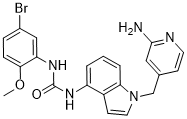Because the process of sporulation is highly energy-intensive and irreversible once commenced, mutants that delay sporulation to take advantage of remaining nutrients would out-compete wild-type cells during repeated passage in vitro in the absence of other selection pressures, as has been demonstrated in extended in vitro evolution studies with B. subtilis under relaxed sporulation conditions. This may not be universally the case, since gain-of-function mutations in sporulation such as those observed in this studymay compete Ginsenoside-F4 favorably with wild-type cells if cannibalism of vegetative cells by sporulating bacteria is the dominant selective pressure. Finally, horizontally transferred genetic elements can have dramatic effects on sporulation: for example, recent studies of phage lysogeny in B. anthracis have revealed the ability of several integrated phages to positively affect the kinetics of sporulation upon lysogeny of commonly used B. anthracis strains. This study identifies the spo0F allele as the signature of a deliberate selection during the development of B. atrophaeus as a simulant. However, without the knowledge of the history and the analysis of the phenotypes of the strains originating from ”Camp Detrick” as published in the open literature, attribution of this genotype to a deliberate selection event would not have been definitive, since a similar phenotype is observed in the 1013 lineage which to our knowledge was not deliberately selected for any specific trait. Any study designed to determine genomic ”signatures” of deliberate enhancement or selection is likely to require an analysis of the baseline likelihood that mutations conferring a similar phenotype would emerge and become fixed by natural processes within an evolutionary timeframe consistent with a known time interval or number of passages. Available evidence suggests that hypersporulation is not easily evolved in vitro. Maughan and coworkers attempted to evolve populations of a laboratory strain of B. subtilis with a hypersporulating phenotype by repeatedly heat-shocking cultures. While their efforts to enrich for hypersporulators failed, other studies revealed that asporogenous mutants evolved readily, confirming many early studies. With the exception of the studies by Maughan et al., most ofthese investigators applied selections intended to inhibit sporulation rather than to enrich for strains with elevated sporulation rates. The 1013 lineage was never heat-shocked during its many transfers; thus the adaptations seen in this work are the result of balancing sporulation versus vegetative growth for prolonged periods on agar slants. However, because undomesticated isolates were observed to sporulate to 98�C100%, we cannot formally exclude the possibility that in vitro culture of the 1942 strain following its isolation for an unknown period by the University of Wisconsin might have selected for a hyposporulating variant. In this scenario, the H101Rand A98P mutations would represent suppressor mutations. We consider this possibility unlikely, given the phenotypic similarity of two environmental isolates in the UW collection. Furthermore, a progression toward darker pigmentation and greater hemolysisis evident in the ”military” lineage. These phenotypic changes are associated with the accumulation of additional mutations  including a P145L substitution mutation in sigH,a positive regulator of sporulation and an A13P mutation in scoC, a negative regulator of sporulation. Together, the strains analyzed in this study suggest strong selective pressures on the genes in the sporulation pathway, and more carefully controlled studies should be carried out to determine the dynamics of in vitro evolution and adaptation of spore-forming organisms, as has been done extensively in E. coli. Unexpectedly, the ”military” lineages were also Chlorhexidine hydrochloride marked by the loss of catalase activity, whose presence is an identifying feature of both B. subtilis and B. atrophaeus.
including a P145L substitution mutation in sigH,a positive regulator of sporulation and an A13P mutation in scoC, a negative regulator of sporulation. Together, the strains analyzed in this study suggest strong selective pressures on the genes in the sporulation pathway, and more carefully controlled studies should be carried out to determine the dynamics of in vitro evolution and adaptation of spore-forming organisms, as has been done extensively in E. coli. Unexpectedly, the ”military” lineages were also Chlorhexidine hydrochloride marked by the loss of catalase activity, whose presence is an identifying feature of both B. subtilis and B. atrophaeus.